-
Previous
The thirteenth and fourteenth Galileo European positioning satellites were successfully launched
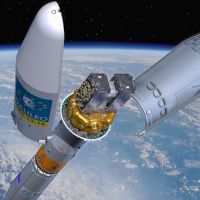
-
Next
China launched its twenty-second BeiDou satellite on March 30
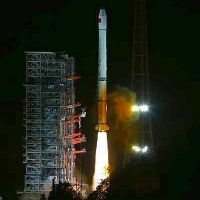
IRNSS-1G was successfully launched, completing the Indian Regional Navigational Satellite System
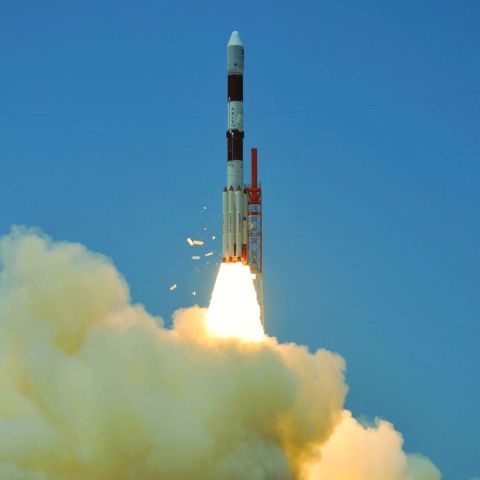
Images provided by: Indian Space Research Organisation (ISRO)
IRNSS-1G, the seventh and final positioning satellite in the Indian Regional Navigational Satellite System (IRNSS), was launched on a PSLV rocket at the Satish Dhawan Space Centre in India at 12:50 on April 28 local time (16:20 JST). IRNSS-1G was put on a geostationary transfer orbit, making the launch a success. In the future it will be placed on a prescribed geostationary orbit (GEO; altitude of approximately 36,000 kilometers, east longitude of 129.5 degrees) by ground control.
Completion of a positioning satellite system with three GEO satellites and four IGSO satellites
The successful launch of IRNSS-1G completed the seven-satellite IRNSS. On the GEO, one satellite each is positioned on the east longitude of 34 degrees (IRNSS-1F), 84 degrees (IRNSS-1C), and 129.5 degrees (IRNSS-1G). On the inclined geosynchronous orbit (IGSO), two satellites each are positioned with a central longitude that is an east longitude of 55 degrees (IRNSS-1A and 1B) and east longitude of 111.75 degrees (IRNSS-1D and 1E), totaling seven satellites.
The IGSO is an orbit in which the geostationary satellites have inclined orbital planes. Just like the quasi-zenith satellite orbit (QZO), the satellite nadir points draw a figure eight from north to south centered on the equator (the altitudes and inclinations differ by positioning system). For IRNSS, the altitude is 35,700 kilometers and the inclination is 29 degrees.
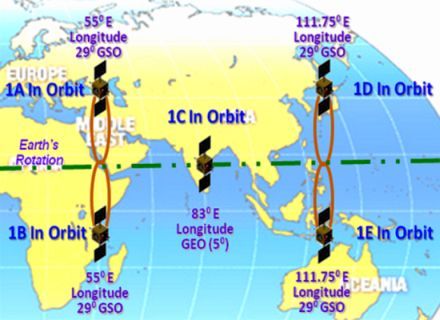
(IRNSS-1F [east longitude of 34 degrees] and IRNSS-1G [129.5 degrees]) were added to complete the system (the image is from the ISRO website).
IRNSS will be renamed to “NAVIC” in the future
Indian President Pranab Mukherjee praised the Indian Space Research Organisation (ISRO) for its successful launch of the final IRNSS satellite. Prime Minister Narendra Modi also congratulated the ISRO scientists and team and announced that “IRNSS” will be renamed to “Navigation Indian Constellation” (NAVIC).
NAVIC services will be offered throughout India and in neighboring countries within a 1,500-kilometer range. Several months will be spent conducting stability tests and verification tests for all seven satellites towards the service launch.
Links
- Indian PSLV lofts IRNSS-1G to complete navigation constellation (April 28, 2016, NASA spaceflight)
- Indian launch rounds out domestic navigation network (April 28, 2016, Spaceflight Now)
- IRNSS Launch: PM Modi Names New Navigation System As 'NAVIC' (April 29, 2016, NDTV)
- With IRNSS-1G launch, India completes and renames its navigation constellation (April 29, 2016, GPS World)
- India's very own GPS is ready with seventh navigation satellite launch (April 28, 2016, Hindou)
-
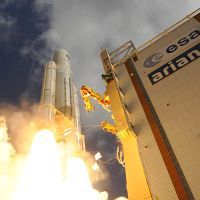 Nov.20,2016
Nov.20,2016The first simultaneous launch of four Galileo European positioning satellites was successful
-
 Aug.18,2016
Aug.18,2016The salvaged fifth and sixth Galileo satellites to start sending test signals
-
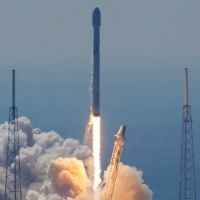 Jun.29,2016
Jun.29,2016Eutelsat launched a communication satellite equipped with a Wide Area Augmentation System (WAAS) payload
-
 Jun.16,2016
Jun.16,2016China launched its third BeiDou satellite this year
-
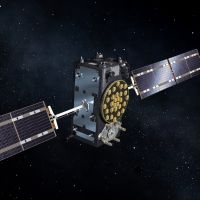 Jun.08,2016
Jun.08,2016The GSA will establish the Galileo Reference Centre in the Netherlands
-
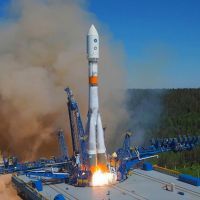 Jun.01,2016
Jun.01,2016Russian positioning satellite GLONASS-M was successfully launched on May 29
-
 May.28,2016
May.28,2016The thirteenth and fourteenth Galileo European positioning satellites were successfully launched
-
 Apr.03,2016
Apr.03,2016China launched its twenty-second BeiDou satellite on March 30
-
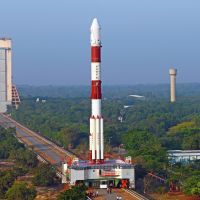 Mar.12,2016
Mar.12,2016Indian positioning satellite IRNSS-1F was successfully launched on March 10
-
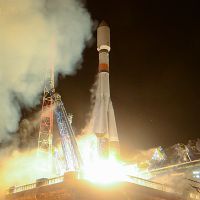 Feb.14,2016
Feb.14,2016Russian positioning satellite GLONASS-M was successfully launched on February 7
-
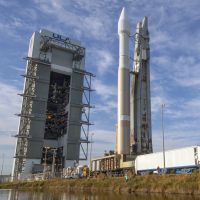 Feb.12,2016
Feb.12,2016GPS IIF-12 satellite was successfully launched on February 5
-
 Feb.11,2016
Feb.11,2016China launched its twenty-first BeiDou satellite on February 1
-
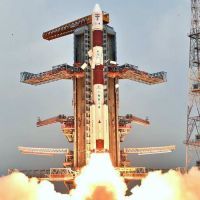 Jan.25,2016
Jan.25,2016Successful launch of the Indian IRNSS-1E positioning satellite
-
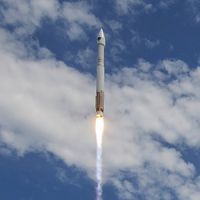 Jan.10,2016
Jan.10,2016Fifteen positioning satellites were launched in 2015
-
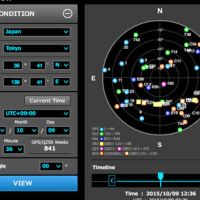 Jan.05,2016
Jan.05,2016The latest version (ver.2.0) of GNSS View
-
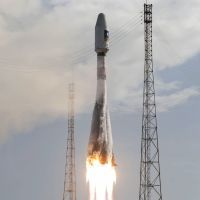 Dec.21,2015
Dec.21,2015Galileo 11 and 12 satellites were successfully launched on December 17
-
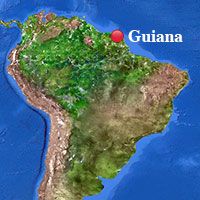 Nov.26,2015
Nov.26,2015Launch of Indian satellite GSAT-15 in the GAGAN system
-
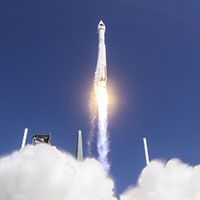 Nov.02,2015
Nov.02,2015GPS IIF-11 satellite was successfully launched on an Atlas V rocket
-
 Oct.05,2015
Oct.05,2015China launched its twentieth BeiDou satellite on September 30
-
 Sep.16,2015
Sep.16,2015Two Galileo satellites were successfully launched
-
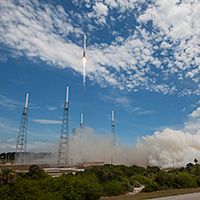 Aug.14,2015
Aug.14,2015GPS IIF-10 was successfully launched by the U.S., and two BeiDou satellites were successfully launched by China


